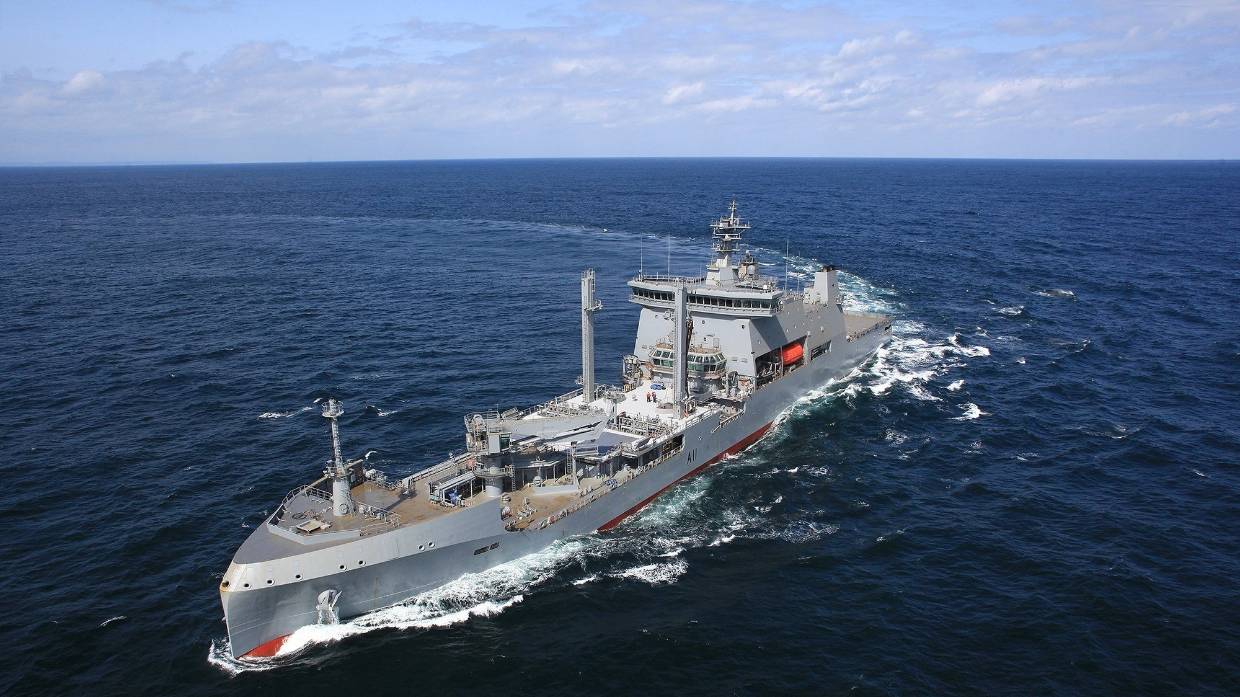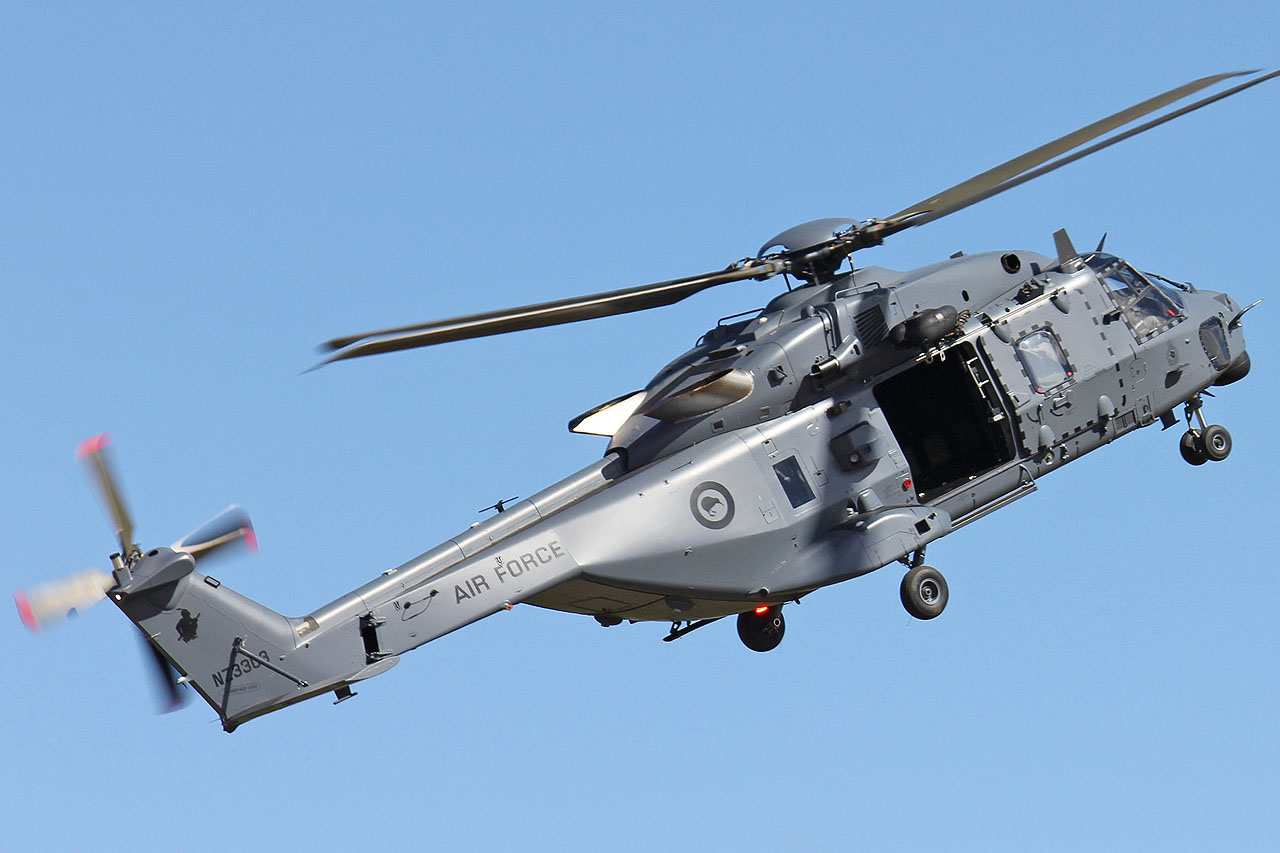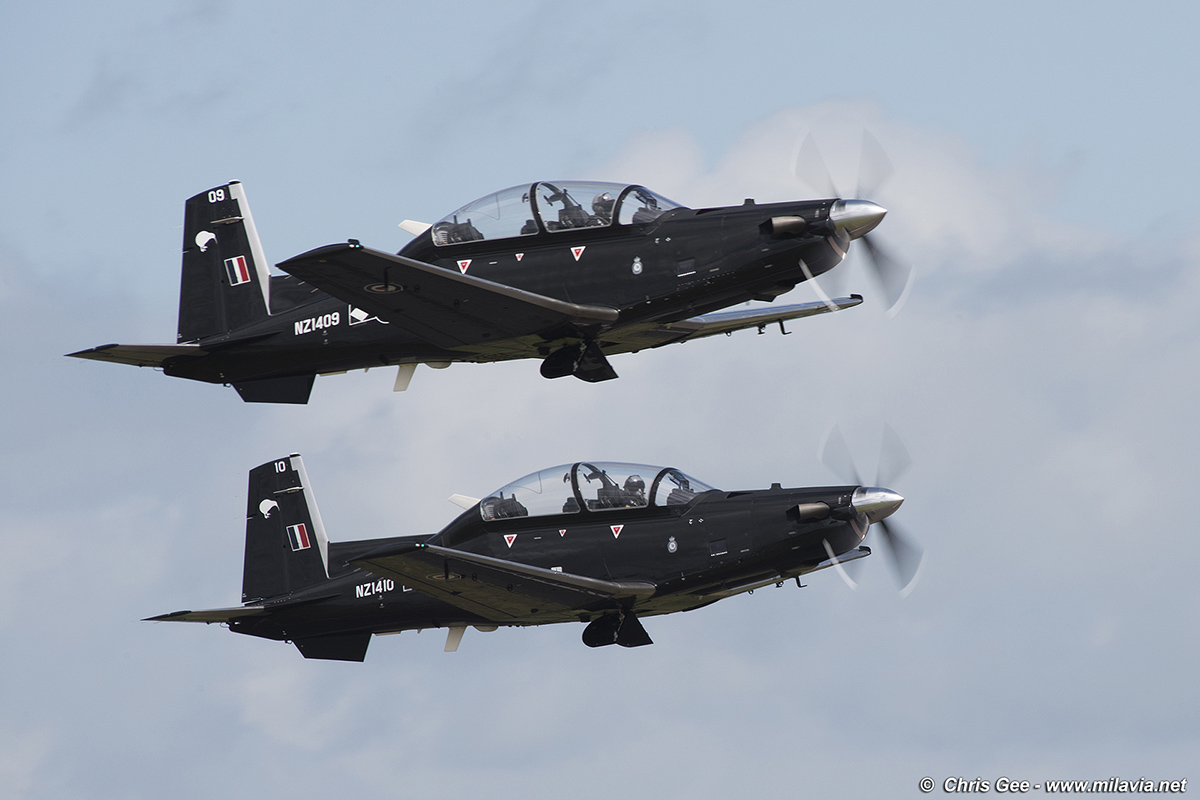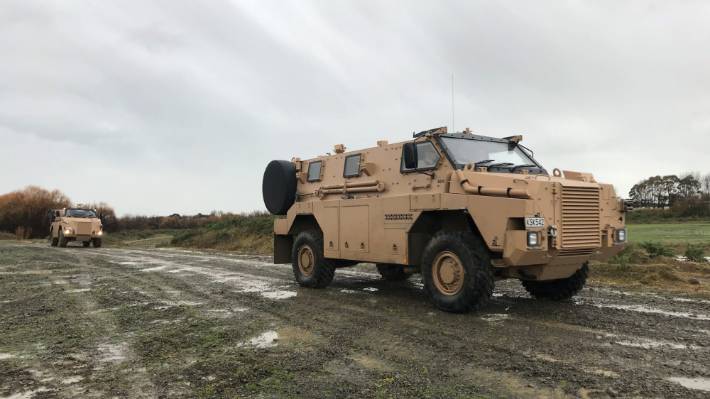Currently, the NZDF across all three services are getting new equipment and upgrades. Some of this has already taken place, and some are already on order. Others we know what is what wanted just not the final design and or type.
MARITIME
For the Navy the ANZAC frigates are currently in their final stages of upgrades over in Canada. HMNZS Te Kaha is due back later this year and Te Mana next year. While Te Kaka has taken a lot longer than expected it was a very very complex upgrade.
The upgrades including the new CAMM air defence missile system (ADMS), new radars and senors from the Smart-S Mk2 3D radar, infrared surveillance and laser warning, upgraded data link and IFF, to the new decoys and defensive Sea Senator Torpedo detection and decoy system, Floating missile decoy, Rheinmetall - Multi Ammunition Softkill System and finally tying it altogether new Ops room and the Lockheed Martain CMS330.
The one thing that lets all this down is there is still no medium to long-range ship launched ASM or Anti Ship Missile. Even if it was the latest block release RGM-84 Harpoon ASM. Even though it is older it would give the frigates the capability to at least to go on the offensive. Or get on the program with some of the newer ASM that are coming on line.
Currently, the frigates can only fire the AGM-119 Mk 2 Mod 7 Penguin Missile launched from SH-2G(I) Super Seasprite no ship bourne launched missile. CAMM can be used in surface mode for smaller faster targets.
And to be fair arming 2 frigates and having spare missiles in stock would not cost that much, and would again show our allies yes we are a small navy but we are willing to go on the offensive to defend our freedoms and areas of influence.
Even when we get the frigates back in around 2024 the communications equipment will get an upgrade. We already have industry engagement and a request for tender in 2019

The new polar class AOR Tanker HMNZS Aotearoa is a force multiplier as she can keep our frigates and our allied ships at sea for longer, supplying fuel, food, and spare parts even possible ammunition. And one of her main advantages is being able to supply McMurdo and Scott Bases.
HMNZS Manawanui III our new DHV also has new capabilities, for diving and recovery operations as she a littoral hydrographic and diving support vessel. From her compression chamber, moon pool, wet diving bell, to her station keeping abilities, and large 100-ton crane for recovery operations.
These vessels and equipment a mostly in operation, I say mostly due to the frigates as time of writing are not quiet operational or completed as of yet. This is where we get into the future equipment with two new vessels in the next 8 or 9 years.
The new Southern Ocean Patrol vessel a purpose-built patrol vessel that is designed to go into the southern ocean and the Ross sea. She will have an ice belt, but whether it will be a heavier grade that our current OPV’s is unknown. Personally I would like to see them to be able to tackle a bit more than Polar Class-6 which is the current OPV’s and HMNZS Aotearoa. Maybe up it to PC-5 or PC-4.
The SOPV will be built to commercial standards is still going to be a force multiplier, have a dedicated vessel that can patrol the Ross Sea in 90% of any weather it can through at the vessel is more than we can achieve now. The current OPV’s have proven their worth but are limited.
I can’t see the SOPV being heavily armed and would most likely be similar to what the current OPV’s have 25mm auto typhoon gun and a couple 50 cal HMG. But I would like to see one improvement and that is for the hanger to have a proper weapons storage magazine to be able to arm the helo with any of the weapons it can carry, just in case, it can then be used in other operations and missions.
Our current OPV’s don’t have this. Though it is possible in theory to use an armoury grade container on the stern (the OPV’s can carry x4 20 foot containers) and use the crane to bring any weapons ie; penguin missile and or torpedo to the flight deck.
The issue here then becomes the sensors, the OPV’s don’t really have the appropriate sensors for this kind of operation. So the SOPV would need a better suite of sensors. From memory the budget for this vessel is the range of 300-600 million and to be in service around 2027
Now for the big decisions the enhanced 2nd sea lift vessel. I have written few articles on this subject in the past.
- Options for the NZDF and RNZN 2nd enhanced Sealift vessel
- Why do I think the Endurance 170 LHD is a good choice for the RNZN.
- How much for an enhanced sealift vessel?
- Other LHD operations
However I am going to say what I believe we should get and what we will actually get are 2 totally different things. And even though I believe we can afford it according the given budget it will most likely be a vessel like Canterbury with a well dock nothing more.
The problem here is politicians that do not have the guts or will power to stand up and get the decent equipment we need.
The vessel either which way will be much larger than HMNZS Canterbury if it is to meet all the requirements of the DCP 2019.
“It will also support the same or a greater number of embarked helicopters as HMNZS Canterbury”

This is where the crunch happens if it s going to be the same number of helos as Canterbury ie; 3 NH-90 and 1 SeaSprite then a LPD with a decent hanger and flight deck will work.
If however they choose to want a greater number of Helos to be operated at once, then you start looking at the small LHD with the through flight deck operation.
With Indicative capital cost of more than $1b is a large wade of cash. Remember our Ice strengthen Polar Class Tanker with features that the LPD or LHD won’t have cost 500 million.
And I still argue that the 1 billion plus is for one vessel, given that the DCP states;
Additional Enhanced Sealift Capability
203. HMNZS Canterbury will be replaced in the mid-2030s, at the end of its service life. The capability acquired will be determined during the business case process, but will improve the Defence Force’s sealift capability at the time HMNZS Canterbury is retired, complementing the enhanced sealift vessel procured in the late 2020s. Options will be explored against the composition of the fleet, the wider Defence Force and the prevailing strategic environment.
Page 13 Point 69-71.
69. Recognising the high value of sealift to humanitarian and disaster relief, and the sustainment of deployed forces, in the mid-2020s an additional sealift vessel will be acquired. Operating alongside HMNZS Canterbury, this acquisition will provide two sealift vessels, and will greatly improve the effectiveness of the Defence Force, and the resilience of the nation, and the region.
70. The enhanced sealift vessel will have greater lift capacity than HMNZS Canterbury. The capability will provide a highly flexible military asset, including hospital facilities, planning spaces, and self-defence capabilities. It will also provide support for the deployment of a range of capabilities, including Special Forces, Unmanned Aerial Vehicles and NH90 helicopters. The enhanced sealift capability will also improve the New Zealand Defence Force’s amphibious operations. Through the provision of a well dock, it will be able to conduct operations in a wider range of sea conditions, and will have the size and capacity to carry large equipment, and sufficient aviation capacity to allow extended, long duration operations. Its size will also provide for the transport of a larger number of personnel, allowing for the value of the increased size of the New Zealand Army to be realised.
71. Collectively, these enhancements will significantly increase our ability to respond to humanitarian and security events in the Pacific region. While a future project will determine detailed requirements for this capability, a Landing Platform Dock is an example of the type of vessel that will be considered.
Basically explains what capabilities they are wanting for the new enhanced sealift vessel. Basically saying bigger better than HMNZS Canterbury.
Page 13 Point 72.
72. Following 2030, HMNZS Canterbury will be withdrawn from service. At this time an investment will be made to further improve the Defence Force’s sealift capability with an additional vessel. Options will be explored against the composition of the fleet, the wider Defence Force and the prevailing strategic environment.
Another words the replacement vessel for HMNZS Canterbury is not even on the books nor part of the DCP 2019 and it’s 20 billion dollar spend up.
So my point is 1billion plus is a lot of money for a vessel. So I hope they do it right and get a proper LPD that fully meets the changing requirements of the NZDF or dare I say a small LHD.
AIR
While not part of the DCP 2019, the Air Force does have modern equipment with the current NH-90 and A109 helicopters giving the Airforce 14 modern helicopters. Add the 8 fully upgraded Kaman SH-2G(I) Super Seasprite with modern avionics and systems.

Just a quick note here the Seasprite are navy helicopters, with navy pilots and loadmasters, however maintenance is carried out by the airforce.
The air force, on the other hand, has also been looked after to an extent, the ageing C-130H’s are to be replaced with like for like but with an upgrade in capability getting the C-130J-30 Super Hercules. As I have said elsewhere there was really one viable option and this was it. It would have been nice to have a couple of A-400M’s in kiwi colours but realistically the A-400M is still having teething issues.

The C-2 from Japan is still really going through testing before being any orders should be made same as the Embraer KC-390.
- Boeing completes ASW upgrades on Kiwi Orions
- Boeing P-8A Poseidon
- New sub-killer planes may never fire in anger but Govt wants the option
- New Zealand seeking P-8A Poseidon base builders ahead of first aircraft arrival in 2023
The P-8A Poseidon is to replace the ageing but recently upgraded P3k2’s. However we are replacing 6 P3’s with 4 P-8’s. The normal argument of the P-8 has better range and equipment etc. But to operate a small fleet of 4 usually only means 1 or 2 are available at any one time. Having 6 P-3s meant we usually had (but not always) 3 aircraft available at any one time.
Now, this is not as all bad as it seems as the DCP also states that UAV’s will be purchased to supplement the P-8’s for doing the standard maritime patrols. Freeing up the P-8’s for doing the real sub-hunting and over seas missions and exercises etc.

The old Pacific Aerospace Corporation CT/4 Airtraine have be replaced with the modern Beecraft Texan T-6C II. Giving the possibility with the wing hardpoints of the T-6C II have, the aircraft could be used in basic ground attack mode if push comes to shove making it more flexible than they use to have. At the same time gives flexibility to the army as well.

If the government of the day get the equivalent of the Triton MQ-4C that can spend most of its time in maritime search keep an eye on our borders as well as our ally Australia as they already use this. Again interoperability. It can also be used in S&R as well as other operations and exercises, this would greatly enhance the Air Forces operations ability.
The recently acquired King Air 350 have allowed the New Zealand Defence Force to conduct aircrew training domestically, improving defence’s resilience and sustainability. The leased aircraft will require replacement in the mid-2020s with a training platform that reflects the Royal New Zealand Air Force’s modern fleet of aircraft, following the introduction of the P-8A Poseidon, C-130J-30 Hercules replacement, and strategic airlift capability. Request for tender 2026 Introduction into Service 2028.
Operations in the Pacific and globally will require an air transport option for the movement of personnel, equipment and stores over long ranges. The eventual withdrawal from service of the current Boeing 757 fleet will allow for the procurement of a strategic airlift capability that meets capability requirements across a range of tasks. Indicative dates. Industry engagement commences 2021, request for tender 2024 and introduction into Service – 2028
However sadly there is still no mention of re-establishing any form or fighter wing, and for me, this is still a sensitive subject.
LAND
The army have not been left out either. They have already received the MHOV’s the MARS-L’s Javelin Anti Tank missile. The Barrett M107A1 Anti-Materiel Rifle, Barrett MRAD (Multi-Role, Adaptive Design) Sniper Rifle, Javelin Medium-Range Anti Armour Weapon (MRAAW), Direct Fire Support Weapon (Area) DFSW(A) H&K 40mm Grenade Machine Gun (GMG)

NZSAS have received 5 Bushmaster Protected Mobility Vehicle as well Polaris MRZR, and recently the government purchased 43 more Bushmasters for the regular army to replace the inadequate armoured Pinzgauer. The Bushmaster is only replacing the armoured version Pinzgauer, the general service Pinzgauer will remain in service until at least 2030.
Other army upgrades include, the NZLAV III is to be upgraded or replaced by 2028. The network capability and communications to be upgraded of the army, the army to be increased to 6000 personal. A contemporary replacement or upgrade for the New Zealand Army’s anti-armour weapon, the FGM-148 Javelin missile. 2 Further investment in specialised Special Operations Forces combat vehicles in the late 2020s and Various refreshes of minor New Zealand Army equipment, including soldier systems, to ensure that the New Zealand Army remains a properly resourced land combat force.
Again there is no talk of heavy armour or main battle tank, there is no talk or suggestion that of upgrading the 105 howitzers to 155mm howitzer or having any self-propelled howitzers. There is no talk of replacing surface to air defence, there is no talk of any amphibious mobility vehicles to work with the Navy's Enhanced Sealift Vessel , there is no talk of any serious heavy offensive weapons.





